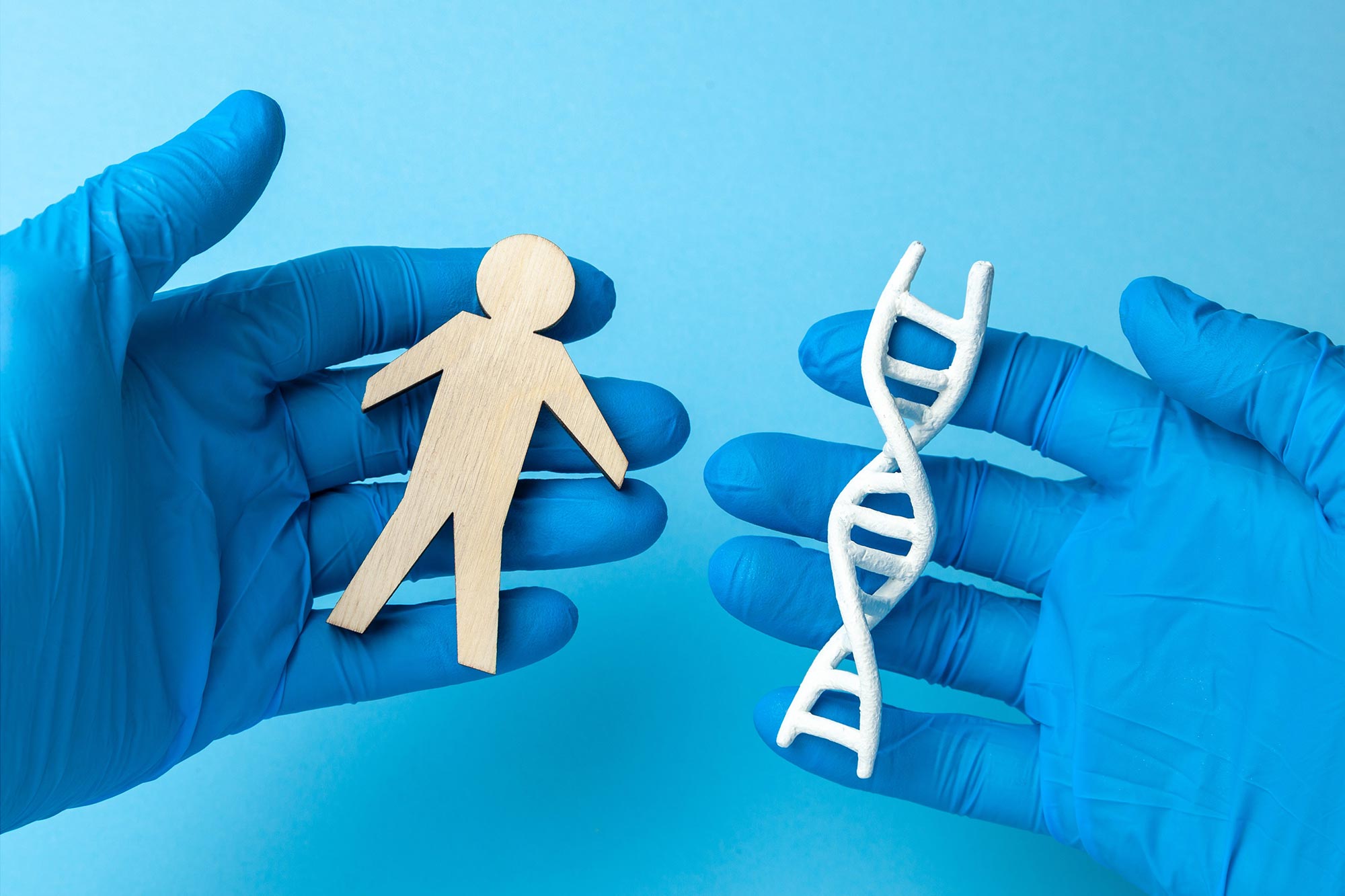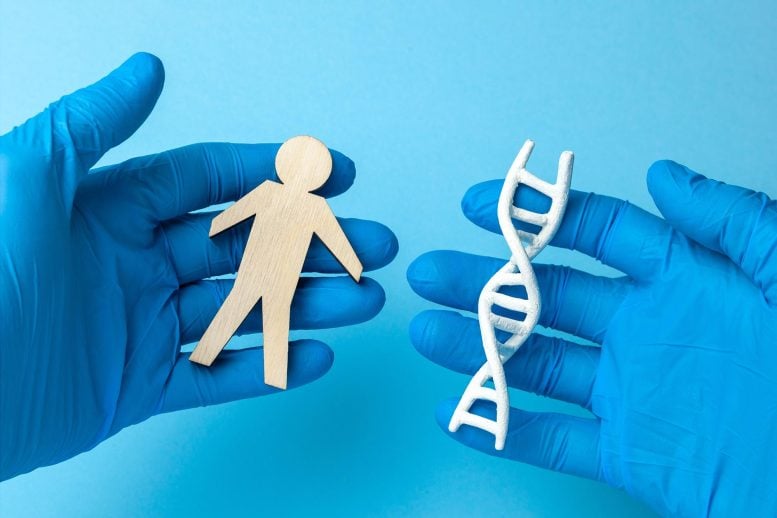

A new study shows that using DNA analysis for newborn screening can detect far more serious, yet treatable, health conditions than traditional methods. The study, called GUARDIAN, is one of the first large-scale projects to use genome sequencing for newborns, and early results suggest that this approach could greatly improve medical care for children.
Early findings from a study on newborn screening reveal that DNA analysis detects significantly more preventable or treatable serious health conditions than traditional screening methods. Most parents offered the option of genome sequencing prefer it.
The study, called GUARDIAN, is among the first large-scale research projects globally to use genome sequencing for newborn screening. It is also the first to release preliminary results.
Transformative Potential of Genome Sequencing
“The results show us that genome sequencing can radically improve children’s medical care,” says Joshua Milner, professor of Pediatrics, director of Allergy/Immunology and Rheumatology at Columbia University Vagelos College of Physicians and Surgeons, and a co-author of the study.
“Genome sequencing allows us to detect things that cause serious illness and take action to prevent those illnesses in a significant number of children, not just a few rare cases,” says Milner, who is also the chief of the allergy, immunology, and rheumatology services at NewYork-Presbyterian Morgan Stanley Children’s Hospital. “It should be instituted as the next standard for newborn screening because it can detect so much more than current methods.”
Comparison With Traditional Screening Methods
In genome sequencing, a newborn’s DNA is analyzed to look for hundreds of specific gene variants that are known to cause diseases. The technology has the potential to detect thousands of genetic diseases, far more than the approximately 60 disorders that standard newborn screening now detects. Genes included in newborn screening cause diseases that could be prevented or treated if identified in early infancy.
Among the first 4,000 newborns enrolled in the GUARDIAN study, genome sequencing identified 120 babies (3%) with serious health conditions, only 10 of whom were identified with standard newborn screening. For one child, detecting a rare gene variant that causes a severe immunodeficiency disorder that was missed by conventional screening resulted in a lifesaving bone marrow transplant.
“In my practice, I’ve seen many patients who’ve spent years going from doctor to doctor with symptoms that no one can explain. But by the time they receive a diagnosis, the window to best manage the disease has usually passed,” says Wendy Chung, who initiated the study in New York when she was the Kennedy Family Professor of Pediatrics at Columbia University and physician-scientist and clinical geneticist at NewYork-Presbyterian Morgan Stanley Children’s Hospital. Chung, Principal Investigator of the study, is now chief of pediatrics at Boston Children’s Hospital and a professor at Harvard Medical School. “Families and pediatricians don’t need to go through those diagnostic odysseys anymore with the genomic technology we now have. We can make the diagnosis at birth.”
Evolution and Expansion of Newborn Screening
Approximately 1 in every 300 babies born in the United States is diagnosed with a treatable health condition that was first detected with standard newborn screening. Since its introduction in the 1960s, newborn screening has expanded to include dozens of mostly genetic diseases. The Health Resources and Services Administration recommends screening for up to 63 conditions, but the screening panel varies from state to state.
“Newborn screening is one of the greatest achievements in public health,” says Jordan Orange, chair of pediatrics at Columbia University Vagelos College of Physicians and Surgeons, pediatrician-in-chief of NewYork-Presbyterian Morgan Stanley Children’s Hospital, and co-author of the study. “It’s an instant equalizer of health care because everyone is screened, ensuring all babies have the same chance at the healthiest life.”
Standard newborn screening works by detecting biomarkers in blood linked to different conditions. For many diseases, blood biomarkers have not yet been identified, limiting the utility of screening.
Advancements in Genetic Screening Technology
Once rare and prohibitively expensive, genome sequencing has become more common and cheaper to use in clinical settings, making it a potentially better option for newborn screening.
“We’re also in the midst of a revolution in children’s medicine and recognizing that many more pediatric conditions than we thought have genetic causes. And they can be treated,” Milner says. “It’s expanding our notion of the types of things to look for.”
The GUARDIAN study now looks for gene variants linked to more than 450 conditions, and dozens of new conditions are identified every year.
“It would be prohibitive to screen for all these diseases with standard testing,” Orange says, “but with genomic screening, there’s minimal extra cost when adding a condition. We can screen for treatable disorders that we never thought of screening for before.”
Initial Findings From the GUARDIAN Study
Beginning in September 2022, the GUARDIAN study offered genome sequencing to every baby born at NewYork-Presbyterian hospitals in New York City.
During its first year, GUARDIAN analyzed genes linked to 156 rare but treatable conditions. Parents had an option to add an additional panel of 99 conditions that have no current treatments, though affected children may benefit from early intervention.
The study collects DNA from the same dried blood spots collected after birth for traditional newborn screening, which is conducted on each study participant by the New York State Department of Health’s Newborn Screening Program.
The paper published in the Oct. 24 issue of JAMA reports results from the study’s first 4,000 newborns, born between September 2022 and July 2023. More than 12,000 babies have now entered the study since its inception.
Significant Diagnoses and Parental Acceptance
Of the 147 children who screened positive with genome sequencing, 120 children were considered true positives and diagnosed with a rare condition. Only 10 of these children were detected through standard screening.
Most children diagnosed with a genetic condition (92 out of 120) had an enzyme deficiency called glucose-6-phosphate dehydrogenase deficiency (G6PD). G6PD is not included in traditional screening but individuals with G6PD deficiency can have moderate to life-threatening reactions to certain foods and medications which can easily be prevented by avoiding them.
For one child in the study, genome sequencing detected a lethal condition—severe combined immunodeficiency disorder (SCID, also known as “boy in the bubble syndrome”)—that standard screening missed. Genome sequencing detected the presence of a rare genetic variant that causes SCID, and that gave doctors the opportunity to protect the infant from life-threatening infections before they started.
“We know that a bone marrow transplant is a cure for these children, but safety and success are the highest when the transplant occurs in the first few months of life, before the child starts developing infections or other symptoms,” Milner says. “Only because of the genomic screening were we able to identify this child in time.”
Overall, 3.7% of children in the study screened positive for a genetic condition. When G6PD cases are excluded, the positive screening rate was 0.6%, two times greater than the 0.3% rate obtained with standard New York state screening.
“This is a basement figure. Once you implement this type of screening, this percentage will go up as we add more conditions to the list,” Milner says.
Parents’ acceptance of genome sequencing for newborn screening was high: 72% of families approached agreed to participate, and most participants (90%) opted to include the optional screening for untreatable conditions.
Future Directions and Challenges
The ongoing study aims to enroll 100,000 babies in the next few years to get a better understanding of how parents feel about genome sequencing, the costs of such programs, and privacy issues, and to identify any difficulties in interpreting results across diverse ancestral groups.
Increasing the scale of genome sequencing will also increase the cost of screening. If the screening provided in the GUARDIAN study was applied to the 210,000 babies born each year in New York state, about 7,700 children would screen positive. Total screening costs would increase as more children are screened and more children with positive screening results would need follow-up testing.
“These costs need to be weighed against the costs incurred if a child gets sick with a condition that could have been treated if caught earlier, and the value of saving lives,” Milner says. “Ultimately, it’s a matter of who will pay for it. When you realize that genomic screening can detect so many more conditions, prevent more illness and save lives, the extra cost of may be worth it.”
Reference: “Expanded Newborn Screening Using Genome Sequencing for Early Actionable Conditions” 24 October 2024, JAMA.
DOI: 10.1001/jama.2024.19662
The GUARDIAN study is conducted by Columbia University Irving Medical Center, NewYork-Presbyterian, the New York State Department of Health, Illumina, and GeneDx. Funding for the study was provided by Sanofi, Illumina, GeneDx, and the Columbia Precision Medicine Initiative.
All authors (from Columbia unless noted): Alban Ziegler, Carrie Koval-Burt, Denise M. Kay (New York State Department of Health), Sharon F. Suchy (GeneDx), Amber Begtrup (GeneDx), Katherine G. Langley (GeneDx), Rebecca Hernan (Boston Children’s Hospital, Laura M. (Illumina), Brenna M. Boyd, Jennifer Bradley (New York State Department of Health), Tracy Brandt (GeneDx), Lilian L. Cohen (NewYork-Presbyterian), Alison J. Coffey (Illumina), Joseph M. Devaney (GeneDx), Beata Dygulska (NewYork-Presbyterian), Bethany Friedman (GeneDx), Ramsay L. Fuleihan, Awura Gyimah, Sihoun Hahn (University of Washington), Sean Hofherr (GeneDx), Kathleen S. Hruska (GeneDx), Zhanzhi Hu, Médéric Jeanne (Boston Children’s Hospital), Guanjun Jin, D. Aaron Johnson (GeneDx), Haluk Kavus, Rudolph L. Leibel, Steven J. Lobritto, Stephen McGee (GeneDx), Joshua D. Milner, Kirsty McWalter (GeneDx), Kristin G. Monaghan (GeneDx), Jordan S. Orange, Nicole Pimentel Soler, Yeyson Quevedo, Samantha Ratner, Kyle Retterer (GeneDx), Ankur Shah (Weill Cornell Medical College), Natasha Shapiro (NewYork-Presbyterian), Robert J. Sicko (New York State Department of Health), Eric S. Silver, Samuel Strom (Illumina), Rebecca I. Torene (GeneDx), Olatundun Williams, Vincent D. Ustach (GeneDx), Julia Wynn, Ryan J. Taft (Illumina), Paul Kruszka (GeneDx), Michele Caggana (New York State Department of Health), and Wendy K. Chung (formerly at Columbia; Boston Children’s Hospital and Harvard University).